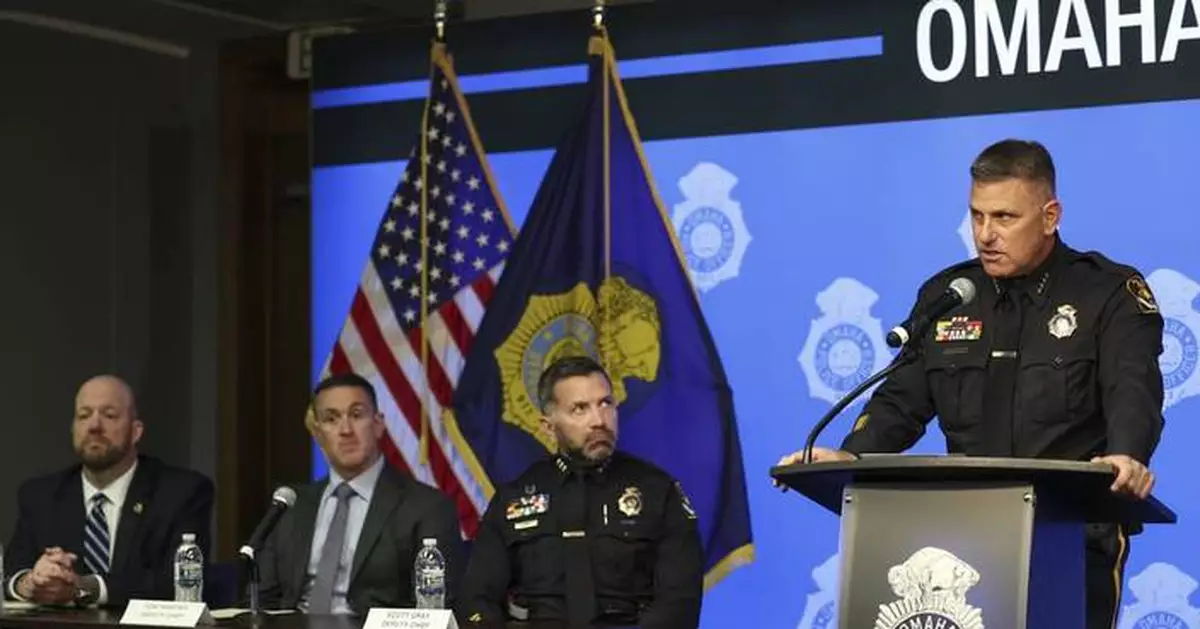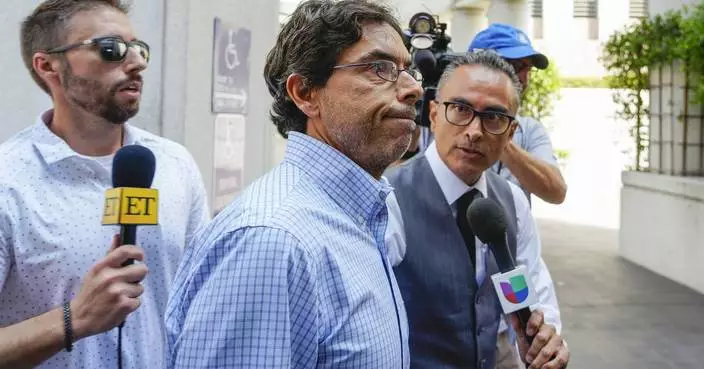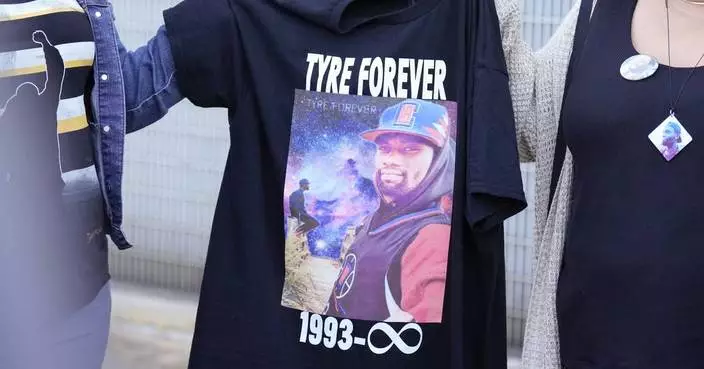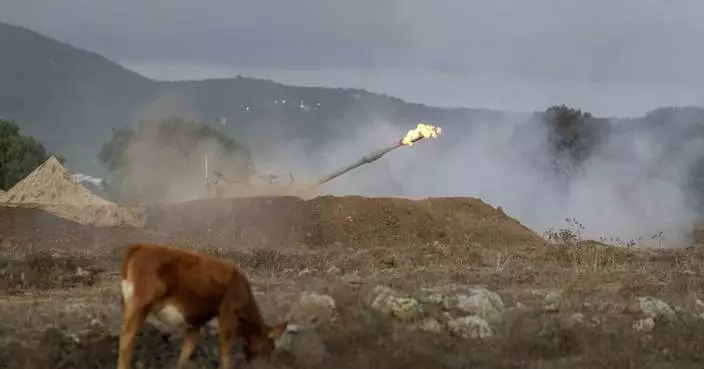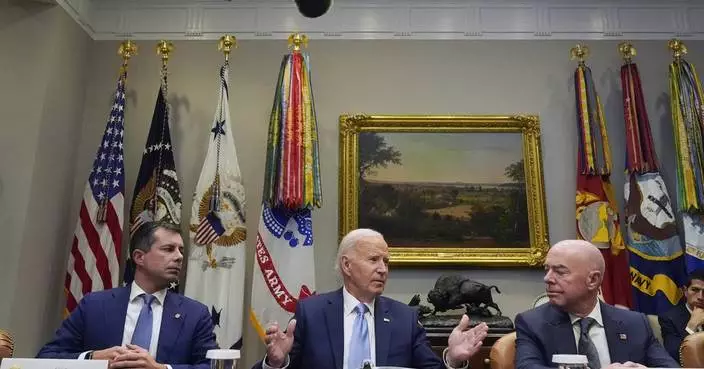OMAHA, Neb. (AP) — Omaha's police chief said Wednesday that an officer followed protocol when he shot a fleeing, armed Nebraska man eight times this weekend, killing him.
Steven Phipps, 22, is the second Black man killed by an Omaha officer in the past two months.
Omaha police Chief Todd Schmaderer told reporters that police pulled Phipps over for expired plates during a traffic stop Saturday and he ran away. Two officers chased him. Schmaderer said Phipps had a gun, which he legally owned, as he scaled a fence.
The firearm was pointed at Officer Noah Zendejas as Phipps fell from the fence, and body camera video stills show the gun in his right hand as he fell, police said. Zendejas, who is Hispanic and has worked for Omaha police for three years, then shot Phipps. Police released a compilation of video and audio from the shooting.
Schmaderer said Zendejas first spotted a heavy weight in Phipps' hoodie as he ran.
Steven Phipps' aunt, Angela Phipps, was with the family when police showed them the full video and audio from the shooting, which wasn’t all released at Wednesday's news conference. She said she heard Phipps repeatedly say “don't shoot me” after he hit the ground while holding his hands and one leg up “like a Heisman pose but laying on the ground.”
But Omaha Police Lt. Neal Bonacci said that isn't accurate because the body camera video shows most of the shots were fired while Phipps was in midair. Bonacci said Phipps did say something after he landed, but that was after he had already been shot. He said Phipps didn't drop the gun until after he landed.
Asked by reporters whether Phipps' gun was accidentally pointed at officers because he was falling, Schmaderer said that was “entirely possible.” But he questioned why Phipps still had possession of the gun and had not thrown it to the side. Schmaderer said Zendejas was also concerned about the risk to a public transit stop nearby.
“We really don't know what Mr. Phipps' intent was,” Schmaderer said. “But when that gun started to be pointed to him and he had it in his hand, that officer's authorized at that point to defend himself.”
Zendejas has not previously been disciplined for any use-of-force violations, Bonacci said.
Police said an autopsy shows Phipps was not shot in the back, and they showed a photo of his back to the family. A copy of the autopsy was not immediately provided to reporters.
Douglas County Attorney Don Kleine will review the investigation and decide whether to file charges, and the shooting will later be reviewed by a grand jury under Nebraska law. Kleine’s office did not immediately say when he will announce his decision on any charges.
Phipps' family, who said his father was killed four years ago in California, is distraught over losing him. They said Phipps got off work shortly before the shooting and had his little brother in the car with him.
“I’m so broken that I don’t know what to say. It was just wrong. It was wrong,” said Gail Phipps, his aunt.
Schmaderer said that had Phipps stayed in the car and told officers he had a gun, “he would have been issued a ticket for expired plates.” But his family said he had tried that in the past and was still arrested for having a concealed weapon.
Schmaderer pointed to a recent rise in the number of guns officers are finding in the community and said it's important for people to follow police orders.
“When somebody runs from a law enforcement officer, they’re trained to go after them,” he said. “We’re attempting to reduce crime. The minute I say as chief, ‘We’re no longer going to go after law violators,’ is the minute crime starts going up.”
Last month Schmaderer fired another officer who fatally shot an unarmed man while serving a no-knock warrant, a policy that has since been suspended in the city.
Omaha Police Officer Adam Vail was part of a SWAT team serving a search warrant during a drug and firearms investigation Aug. 28 when he fired the single shot that killed 37-year-old Cameron Ford, prosecutors said. Vail said Ford, who was Black, charged at him without his hands visible.
Kleine declined to charge the officer, but Schmaderer said an internal investigation found Vail violated department procedures.
Schmaderer said he is working to rebuild trust with residents after both shootings and planned to attend another community meeting Wednesday afternoon.
Ballentine reported from Jefferson City, Missouri.
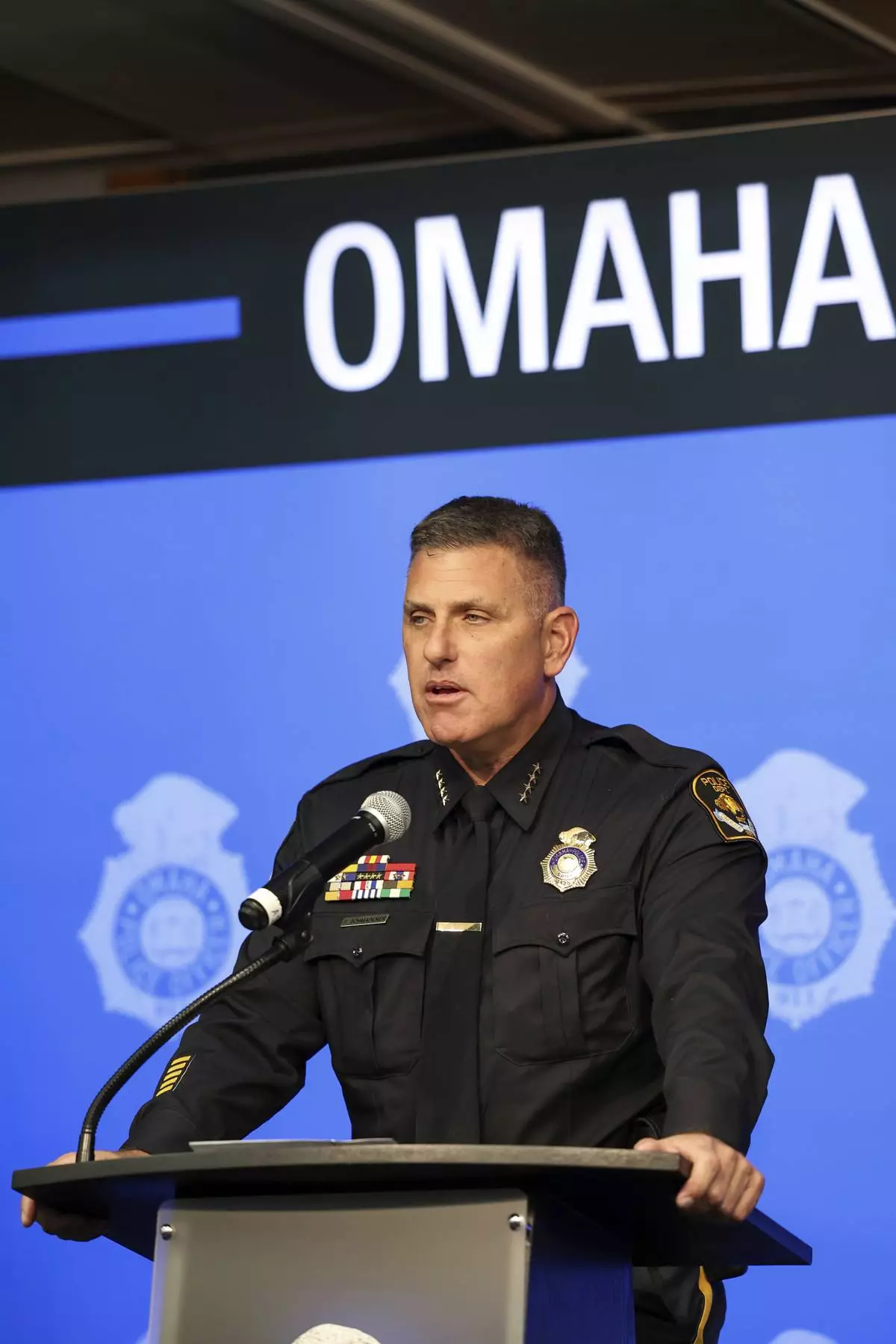
Omaha Police Chief Todd Schmaderer speaks during a news conference on the fatal shooting of Steven Phipps Jr., 22, by police, Wednesday, Oct. 2, 2024, at Omaha Police Headquarters in Omaha, Neb. (Nikos Frazier/Omaha World-Herald via AP)
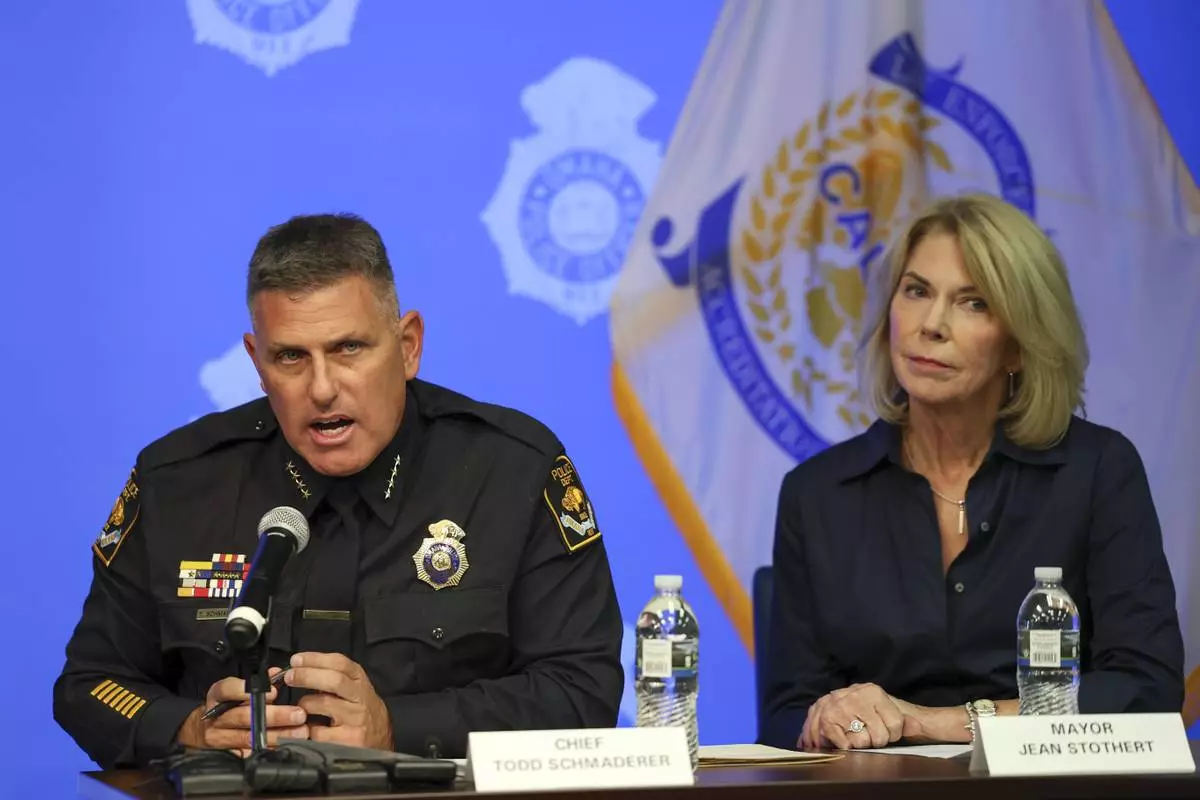
Omaha Police Chief Todd Schmaderer, left, speaks during a news conference on the fatal shooting of Steven Phipps Jr., 22, by police, next to Omaha Mayor Jean Stother, Wednesday, Oct. 2, 2024, at Omaha Police Headquarters in Omaha, Neb.(Nikos Frazier/Omaha World-Herald via AP)
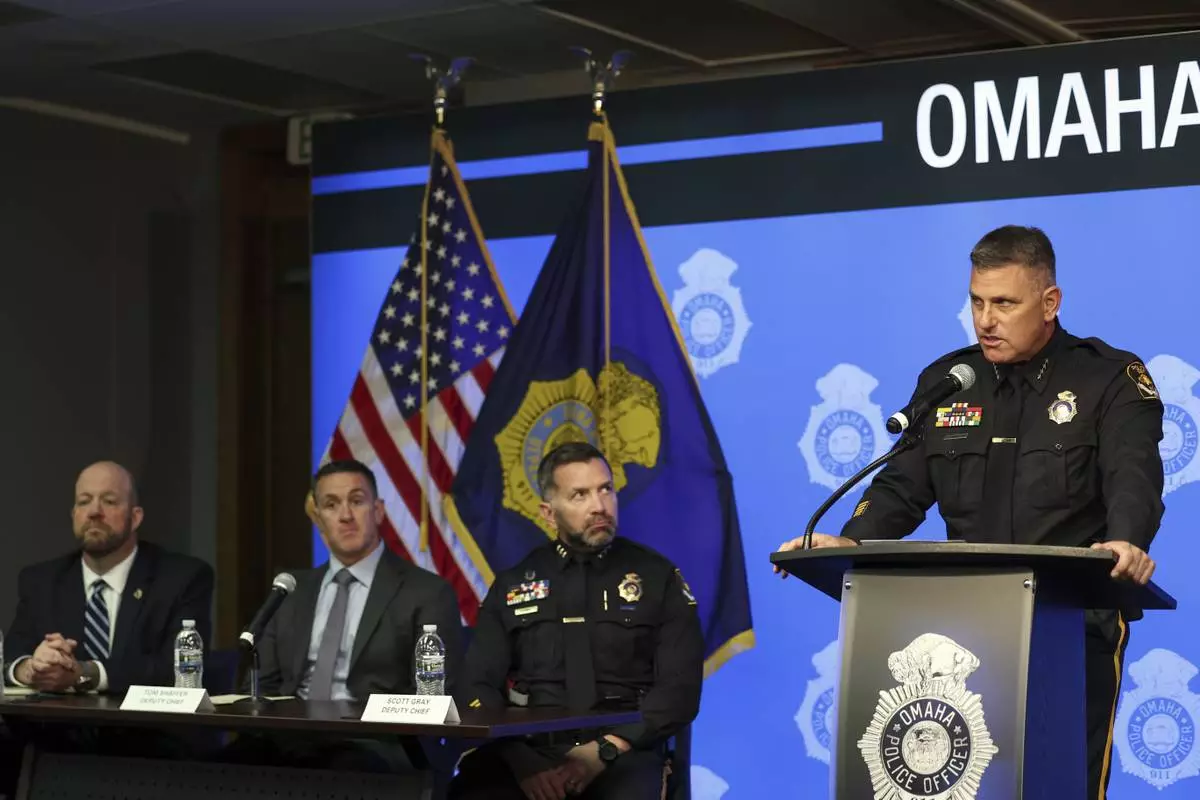
Omaha Police Chief Todd Schmaderer speaks during a news conference on the fatal shooting of Steven Phipps Jr., 22, by police, Wednesday, Oct. 2, 2024, at Omaha Police Headquarters in Omaha, Neb. (Nikos Frazier/Omaha World-Herald via AP)
WASHINGTON (AP) — Donald Trump laid the groundwork to try to overturn the 2020 election even before he lost, knowingly pushed false claims of voter fraud and “resorted to crimes” in his failed bid to cling to power, according to a newly unsealed court filing from prosecutors that offers new evidence from the landmark criminal case against the former president.
The filing from special counsel Jack Smith's team offers the most comprehensive view to date of what prosecutors intend to prove if the case charging Trump with conspiring to overturn the election reaches trial. Though a months-long congressional investigation and the indictment itself have chronicled in stark detail Trump's efforts to undo the election, the filing cites previously unknown accounts offered by Trump's closest aides to paint a portrait of an “increasingly desperate” president who while losing his grip on the White House “used deceit to target every stage of the electoral process.”
“So what?” the filing quotes Trump as telling an aide after being advised that his vice president, Mike Pence, had been rushed to a secure location after a crowd of violent Trump supporters stormed the U.S. Capitol on Jan. 6, 2021 to try to prevent the counting of electoral votes.
“The details don't matter,” Trump said, when told by an adviser that a lawyer who was mounting his legal challenges wouldn’t be able to prove the false allegations in court, the filing states.
The brief was made public over the Trump legal team’s objections in the final month of a closely contested presidential race in which Democrats have sought to make Trump’s refusal to accept the election results four years ago central to their claims that he is unfit for office.
The issue surfaced as recently as Tuesday night’s vice presidential debate when Minnesota Gov. Tim Walz, a Democrat, lamented the violence at the Capitol while a Republican opponent, Ohio Sen. JD Vance, refused to directly answer when asked whether Trump had lost the 2020 race.
The filing was submitted, initially under seal, following a Supreme Court opinion that conferred broad immunity on former presidents for official acts they take in office, a decision that narrowed the scope of the prosecution and eliminated the possibility of a trial before next month's election.
The purpose of the brief is to persuade U.S. District Judge Tanya Chutkan that the offenses charged in the indictment were undertaken in Trump's private, rather than presidential capacity, and can therefore remain part of the case as it moves forward. Chutkan permitted a redacted version to be made public even though Trump's lawyers argued that it was unfair to unseal it so close to the election.
Though the prospects of a trial are uncertain, particularly in the event that Trump wins the presidency and a new attorney general seeks the dismissal of the case, the brief nonetheless functions as a roadmap for the testimony and evidence prosecutors would elicit before a jury.
“Although the defendant was the incumbent President during the charged conspiracies, his scheme was fundamentally a private one,” Smith’s team wrote, adding, “When the defendant lost the 2020 presidential election, he resorted to crimes to try to stay in office."
Trump campaign spokesman Steven Cheung called the brief “falsehood-ridden” and “unconstitutional” and repeated oft-stated allegations that Smith and Democrats were “hell-bent on weaponizing the Justice Department in an attempt to cling to power." Trump, in a separate post on his Truth Social platform, said the case would end with his “complete victory.”
The filing alleges that Trump “laid the groundwork” for rejecting the election results before the contest was over, telling advisers that in the event he held an early lead he would “declare victory before the ballots were counted and any winner was projected.”
Immediately after the election, prosecutors say, his advisers sought to sow chaos in the counting of votes. In one instance, a campaign employee, who is also described as a Trump co-conspirator, was told that results favoring Democrat Joe Biden at a Michigan polling center appeared accurate. The person is alleged to have replied: “find a reason it isnt” and “give me options to file litigation.”
Prosecutors also alleged that Trump advanced claims of fraud despite knowing they were false, describing how he told others that allegations of election regularity made by attorney Sidney Powell were “crazy” and referenced the science fiction series “Star Trek.” Even so, days later, he promoted on the platform then known as Twitter a lawsuit she was about to file.
In demonstrating his apparent indifference to the accuracy of the election fraud claims, prosecutors also cite an account of a White House staffer who after the election overheard Trump telling his wife, daughter and son-in-law on Marine One: “It doesn’t matter if you won or lost the election. You still have to fight like hell.”
The filing also includes details of conversations between Trump and Pence, including a private lunch the two had on Nov. 12, 2020, in which Pence “reiterated a face-saving option” for Trump, telling him, “Don’t concede but recognize the process is over."
In another private lunch days later, Pence urged Trump to accept the results of the election and run again in 2024.
“I don’t know, 2024 is so far off,” Trump told him, the filing states.
Prosecutors say that by Dec. 5, the defendant was starting to think about Congress’ role in the process.
“For the first time, he mentioned to Pence the possibility of challenging the election results in the House of Representatives,” it says, citing a phone call.
But Trump “disregarded” Pence “in the same way he disregarded dozens of court decisions that unanimously rejected his and his allies’ legal claims, and that he disregarded officials in the targeted states — including those in his own party — who stated publicly that he had lost and that his specific fraud allegations were false,” prosecutors wrote.
Pence chronicled some of his interactions with Trump, and his eventual split with him, in a 2022 book he wrote called “So Help Me God.” He also was ordered to appear before the grand jury investigating Trump after courts rejected claims of executive privilege.
Prosecutors also argue Trump used his Twitter account to further his illegal scheme by spreading false claims of election fraud, attacking “those speaking the truth” about his election loss and exhorting his supporters to travel to Washington for the Jan. 6, 2021, certification.
They intend to use “forensic evidence” from Trump’s iPhone to provide insight into Trump’s actions after the attack at the Capitol.
Of the more than 1,200 Tweets Trump sent during the weeks detailed in the indictment, prosecutors say, the vast majority were about the 2020 election, including those falsely claiming Pence could reject electors even though the vice president had told Trump that he had no such power.
That “steady stream of disinformation” in the weeks after the election culminated in his speech at the Ellipse on the morning of Jan. 6, 2021, in which Trump “used these lies to inflame and motivate the large and angry crowd of his supporters to march to the Capitol and disrupt the certification proceeding,” prosecutors wrote.
His “personal desperation was at its zenith” that morning as he was “only hours from the certification proceeding that spelled the end,” prosecutors wrote.
Associated Press writers Jill Colvin and Lisa Mascaro contributed to this report.

Republican presidential nominee former President Donald Trump speaks at a campaign event Tuesday, Oct. 1, 2024, at Discovery World in Milwaukee. (AP Photo/Andy Manis)





